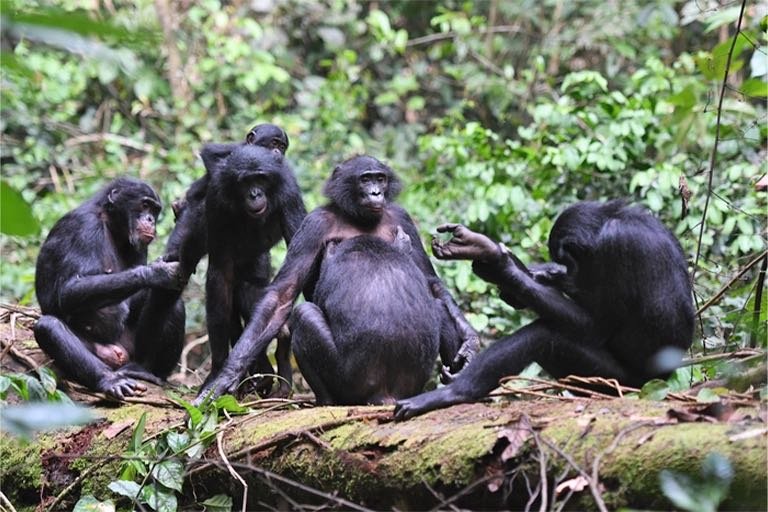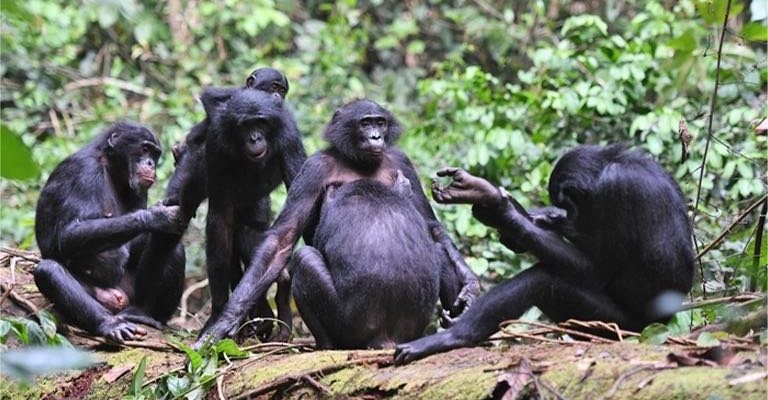
Surviving in such a challenging habitat requires some impressive skills. These creatures rely on their intelligence, social structure, and physical traits to make it through. In this article, we’ll dive into how bonobos survive in harsh environments and explore the fascinating ways they’ve adapted to their surroundings, much like how we learn to deal with life’s curveballs. Let’s get into it!
1. The Bonobo’s Habitat: Understanding Their World
Bonobos primarily live in the rainforests of the Democratic Republic of the Congo, a region characterized by its complex ecosystems and vibrant biodiversity. These forests are not just beautiful; they provide bonobos with a rich source of food and shelter. However, they also face threats from environmental changes, deforestation, and human activity.
The canopy of these rainforests is densely packed with trees, which create a unique habitat. Here’s the thing: bonobos have evolved to be excellent climbers, using their long arms and strong legs to move between branches effortlessly. This ability to navigate the treetops helps them escape predators and find food. Just think about how you might dart up a tree to evade a challenging situation—bonobos do something similar to stay safe!
Additionally, bonobos often stay near rivers, which offer another layer of protection and a water source. These waterways not only provide a place to drink but also allow bonobos to forage for aquatic foods, like fruits and leaves that may fall into the water. Their habitat is a balancing act of safety and resources.
2. Social Behavior: Strength in Numbers
One key to bonobo survival is their strong social structure. These animals are known for their complex social interactions and peaceful nature, which sets them apart from other primates. Bonobos live in matriarchal groups where females often lead the way.
You might wonder why social behavior matters so much. In harsh environments, working together can increase the chances of finding food, protecting one another from threats, and raising young. Bonobos frequently engage in grooming and play, which helps to strengthen bonds within the group. This camaraderie is vital in their fight against adversity.
For example, when food is scarce, bonobos will often work together to share resources. They’ll signal to each other when they find ripe fruits or nuts, ensuring that no one is left hungry. This cooperative behavior enhances not only their survival but also the overall health and well-being of the entire group.
3. Adapting to Climate Challenges
The climate in their habitat can be unforgiving, with heavy rains and unpredictable weather patterns. Bonobos have adapted to these challenges in clever ways. For starters, they have thick, dark fur that helps insulate them during cooler, damp periods. This natural barrier keeps them warm and dry, allowing them to maintain their energy levels.
Moreover, bonobos are also great at finding shelter. During heavy rains, they often gather under large leaves or in tree hollows to stay dry. You might think of it as how we seek shelter during a downpour, only their skill is built-in! By using their environment wisely, bonobos can wait out the worst of the weather and preserve their energy for when conditions improve.
Another adaptation is their varied diet. Because they cannot rely on just one food source, bonobos consume a wide array of fruits, leaves, and flowers, ensuring they have options even when some foods become scarce due to seasonal changes. Their ability to adapt their diet plays a vital role in their survival.
4. Communication: The Power of Connection
Communication is essential for bonobo survival, and these apes have developed a rich system of vocalizations, gestures, and expressions to convey information. Their vocal repertoire includes various sounds that signal everything from danger to the discovery of food.
You might be amazed at how effectively bonobos convey their needs. For instance, a specific call might alert nearby group members to a predator, while a different sound could indicate the presence of ripe fruit. Being able to communicate quickly helps them react to environmental changes and increases their chances of survival.
Additionally, bonobos often use body language to enhance their communication. They’ll perform actions like waving their arms or using facial expressions to convey emotions and intentions. This non-verbal communication strengthens their social bonds and promotes cooperation within the group.
5. Problem Solving: Bonobos as Clever Innovators
Bonobos are known for their impressive problem-solving abilities, which come into play when navigating their complex environment. Whether it’s getting to hard-to-reach fruit or figuring out how to access a new food source, these clever apes often find innovative solutions.
For example, if bonobos encounter a tall tree laden with fruit, they might work together to build simple tools. They’ll use sticks to poke at the fruit or create levers to pull items closer. This tool-use is not just a survival tactic; it also reflects their intelligence, showing how they can think creatively in challenging situations.
Honestly, their ability to adapt their problem-solving skills adds an extra layer of survival in the wild. Much like how we might brainstorm different approaches to tackle a tough project, bonobos are constantly innovating to meet their needs.
6. Addressing Threats: Predators and Humans
Bonobos face various threats in their environment, from predators like leopards to the encroachment of humans. To counter these dangers, bonobos have developed several strategies for staying safe.
When it comes to natural predators, bonobos rely on their social structure for protection. Group living allows them to keep watch and alert each other to potential threats. They’ll often stay in trees where they have a better vantage point to see approaching danger.
However, human activities pose a much larger threat to their survival. Deforestation, hunting, and habitat loss have significant impacts on bonobo populations. As their environment becomes fragmented, bonobos struggle to find food and mates. Conservation efforts are critical to help protect these remarkable creatures and their habitats. If we want future generations to enjoy these fascinating animals, supporting conservation initiatives is a step we can all take.
7. Conservation Efforts: Ensuring Their Future
Despite the challenges they face, there are many ongoing conservation efforts aimed at protecting bonobos and their habitats. Organizations work tirelessly to raise awareness, fund research, and develop protective measures for these remarkable apes.
You might be wondering how you can help. Small actions, like supporting wildlife conservation groups or spreading the word about bonobo conservation, can make a significant impact. Additionally, eco-tourism can provide funding for conservation while raising awareness about the plights facing these animals.
Through conservation, we can help ensure that bonobos continue to thrive in their harsh environments. Their survival is not just about the species itself; it’s about maintaining the rich biodiversity of the ecosystems they inhabit.
In conclusion, bonobos are incredible survivors. Their unique adaptations, from social behavior to clever problem-solving, showcase their resilience in the face of adversity. By understanding how bonobos survive in harsh environments, we can appreciate their role in the ecosystem and support their conservation. The story of bonobos in the wild teaches us a valuable lesson about adaptability, cooperation, and the importance of preserving our natural world.

